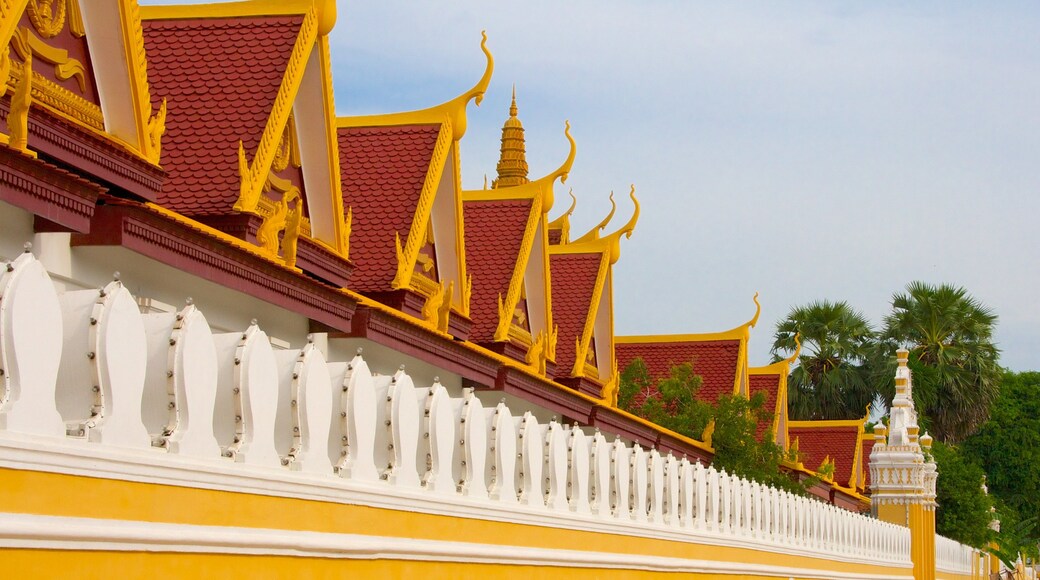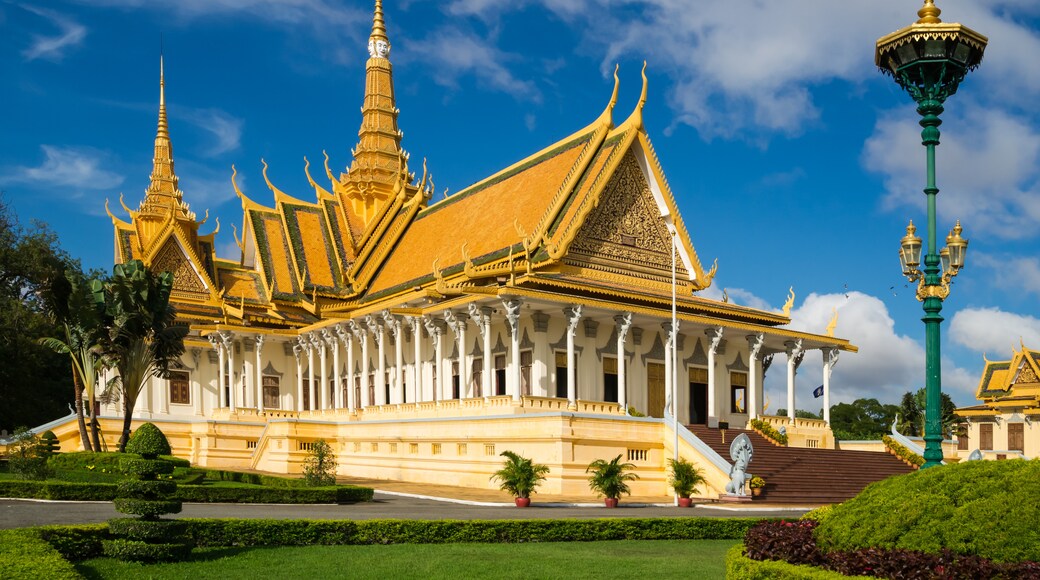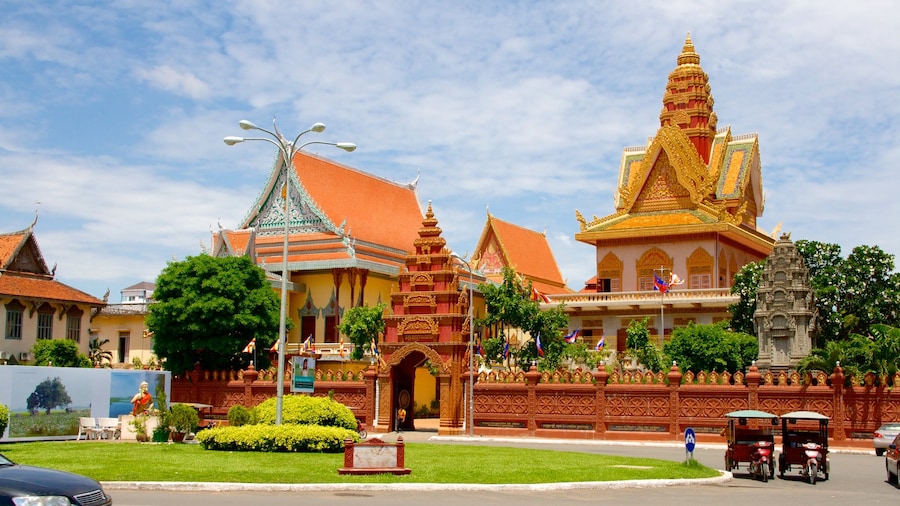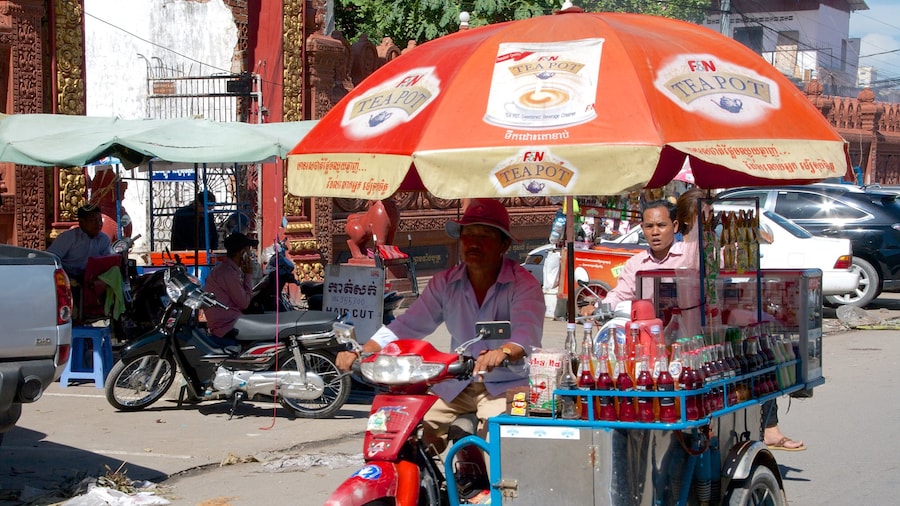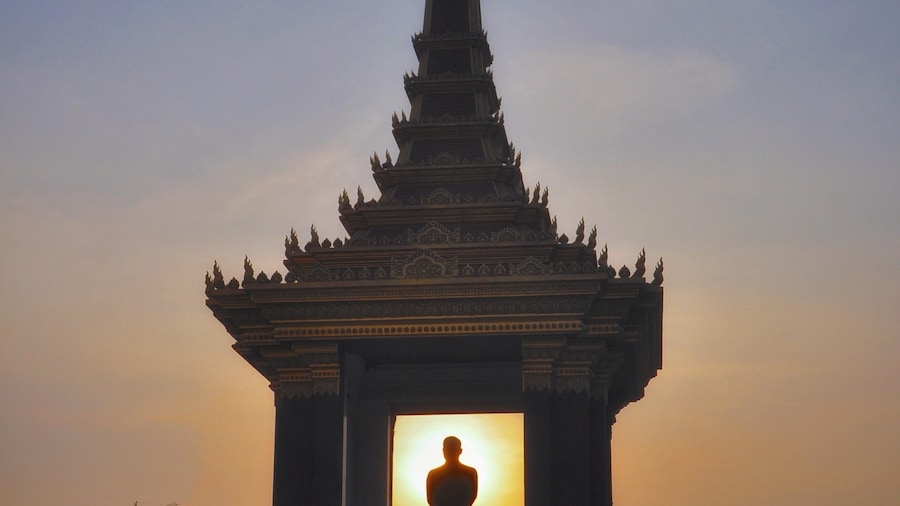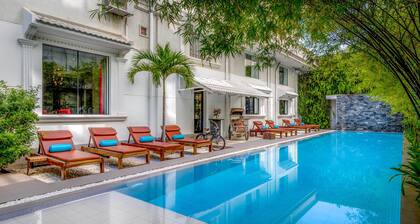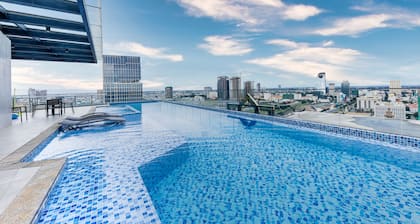One glimpse of Royal Palace is enough to confirm that it was built for kings and queens. Look for the gilded roof and dramatic Khmer architecture of this dominant Phnom Penh landmark.
The palace has been home to Cambodia’s royalty since its construction in 1866, on the site of Phnom Penh’s former old town. The first resident was His Majesty Prah Bat Norodom, the great-grandfather of the current king.
After you enter, turn left to the ornate Throne Hall, an opulent building used for coronations, meetings with important dignitaries and other official celebrations. Featuring a massive tower, Throne Hall dominates the palace complex. Note the various architectural styles, from the European ceiling frescos to the Asian red and gold windows. Look for the gilded coronation throne, capped by a massive tiered parasol, at the back of the room.
Continue south to the Royal Treasury, a narrow pavilion housing royal regalia and artifacts, from the coronation crown to the king’s utensils.
Go to the Pavilion of Napoleon III next door, an iron building exhibiting a classic French style. Napoleon presented it to King Norodom in 1876.
Follow a short pathway to the Silver Pagoda. From Italian marble steps to a solid silver floor, this area exudes luxury. Its crown jewel is a 17th-century emerald Buddha statue, a magnificent model made from solid gold and crystal and featuring 9,500 diamonds.
Find information from pamphlets and placards throughout the palace. Take a guided tour to get the most from your visit. Tours are available in many languages and depart from the admission booth.
The palace is open daily, except for official functions. Wear shorts that reach at least your knee and shirts that reach at least your elbow or you will be obliged to rent appropriate clothing. It can get particularly busy on Sundays, when villagers from the surrounding countryside converge to pay their respects.
Enter Royal Palace via the gate on Sothearos Boulevard. Expect to pay a reasonable admission fee. Be aware that because this is a royal residence, many buildings do not allow public entry.


